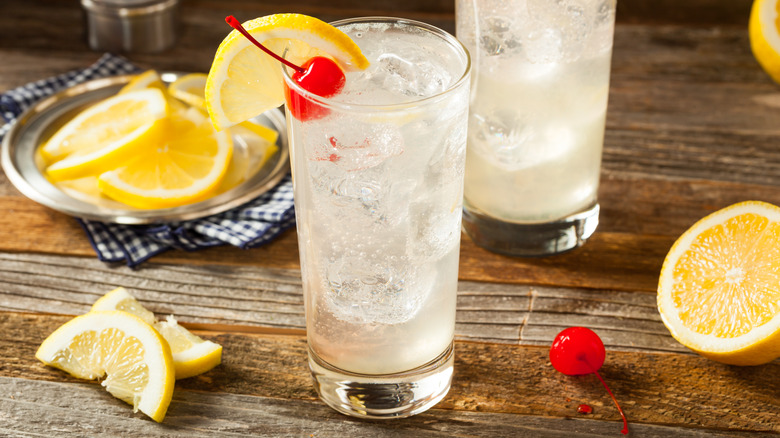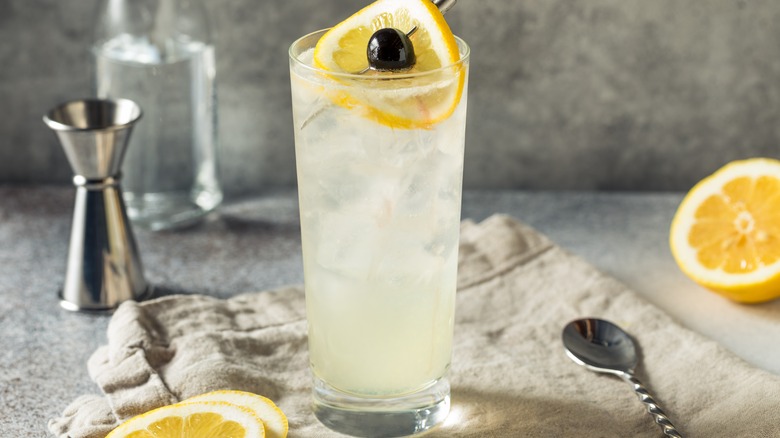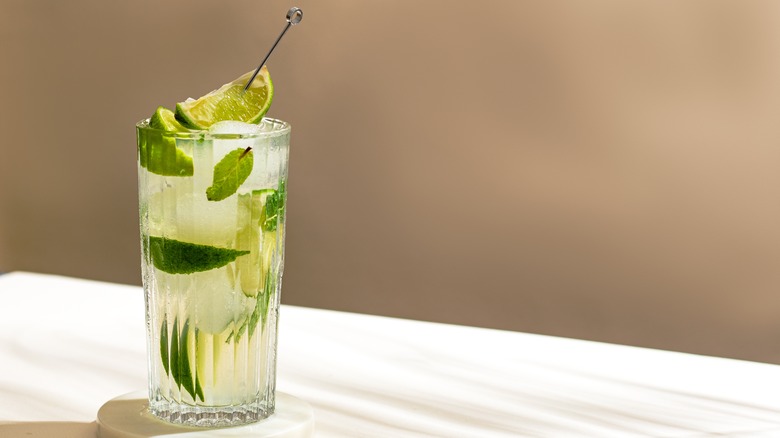Despite Their Similar Shape, Highball And Collins Glasses Are Not The Same
A good cocktail is 50% quality and 50% vibes — which is why glassware plays a significant role in your drinking experience. You've likely heard debates over whether champagne should be served in a flute or a wine glass (or, heaven forbid, a coupe), and martini enthusiasts often go back and forth between their preferences for a V-shaped vessel or a Nick & Nora glass.
However, if your drink of choice is a whiskey soda or a Tom Collins, you might not have given much thought to the tall, thin glass in which your tipple is served. You may recognize it as a highball glass or a Collins glass, though the two are slightly different — and your local bar might actually serve you neither.
The main difference is that Collins glasses are taller than highball glasses ,and hold a larger volume. This distinction makes sense when you consider the original purpose of these glasses. Collins glasses are designed to accommodate drinks with more than two components, whereas highball glasses are intended for mixed drinks made from a single spirit and a mixer.
Differences between highball and cocktail glasses
Highball cocktails, such as gin and tonics, whiskey gingers, and vodka sodas, are essentially mixed drinks served over ice. Some would argue that they aren't even technically cocktails, since they contain only two ingredients: some type of spirit, and a carbonated mixer like soda or sparkling water. These drinks tend not to have a lot of volume, and fit comfortably in a classic highball glass, which holds between eight and 12 ounces.
A Tom Collins, on the other hand, is a classic cocktail. The Collins formula, which includes gin, lemon juice, simple syrup, and soda water, requires more volume, which is why a standard Collins glass holds between 10 and 14 ounces of liquid.
However, since the Collins glass is technically designed with only one or two cocktails in mind — the Tom Collins or its bourbon-based cousin, the John Collins — your local bar is likely to use hybrid glasses. So, it's hardly your fault if you can't distinguish between them.
Similarities between highball and cocktail glasses
Highball glasses and Collins glasses resemble each other because they serve similar functions. Tall, thin glasses are ideal for carbonated drinks because they prevent carbon dioxide from escaping, which helps keep your drink from going flat. This is why champagne flutes are so common — the tall, thin bowl with a narrow opening keeps your bubbly ... well, bubbly.
These two types of glasses are also designed with ice in mind. Have you ever noticed how ice cubes stack perfectly inside a highball glass, looking chic all in a row? This is intentional. By creating glasses that keep the ice cubes in contact, they melt slower, so your drink stays cold without becoming diluted. Of course, these days, many upscale cocktail bars have switched to long, thin ice cubes that fit perfectly in a highball or Collins glass. Very stylish, but they can be a hazard if you tip your glass back too quickly!



